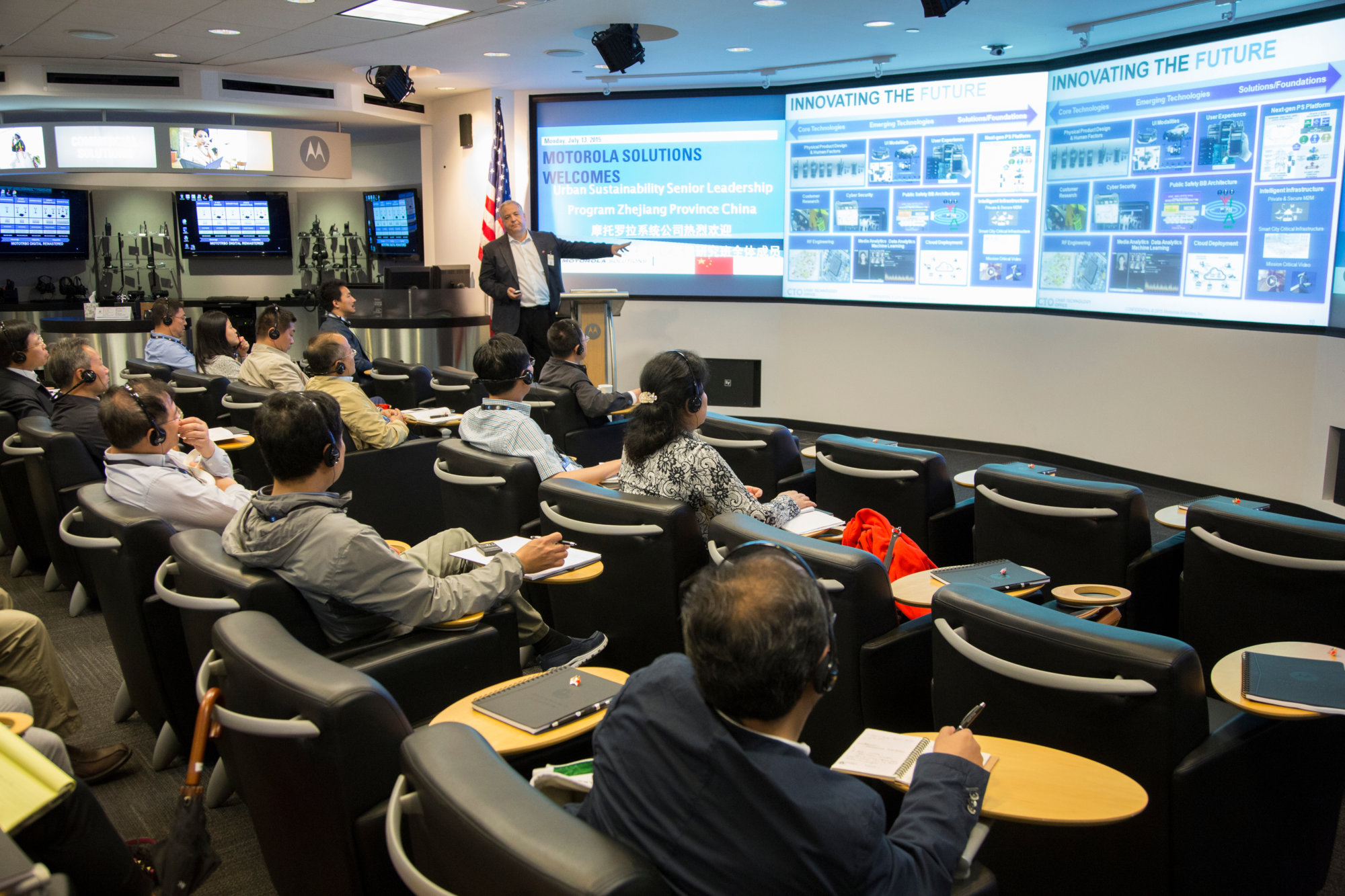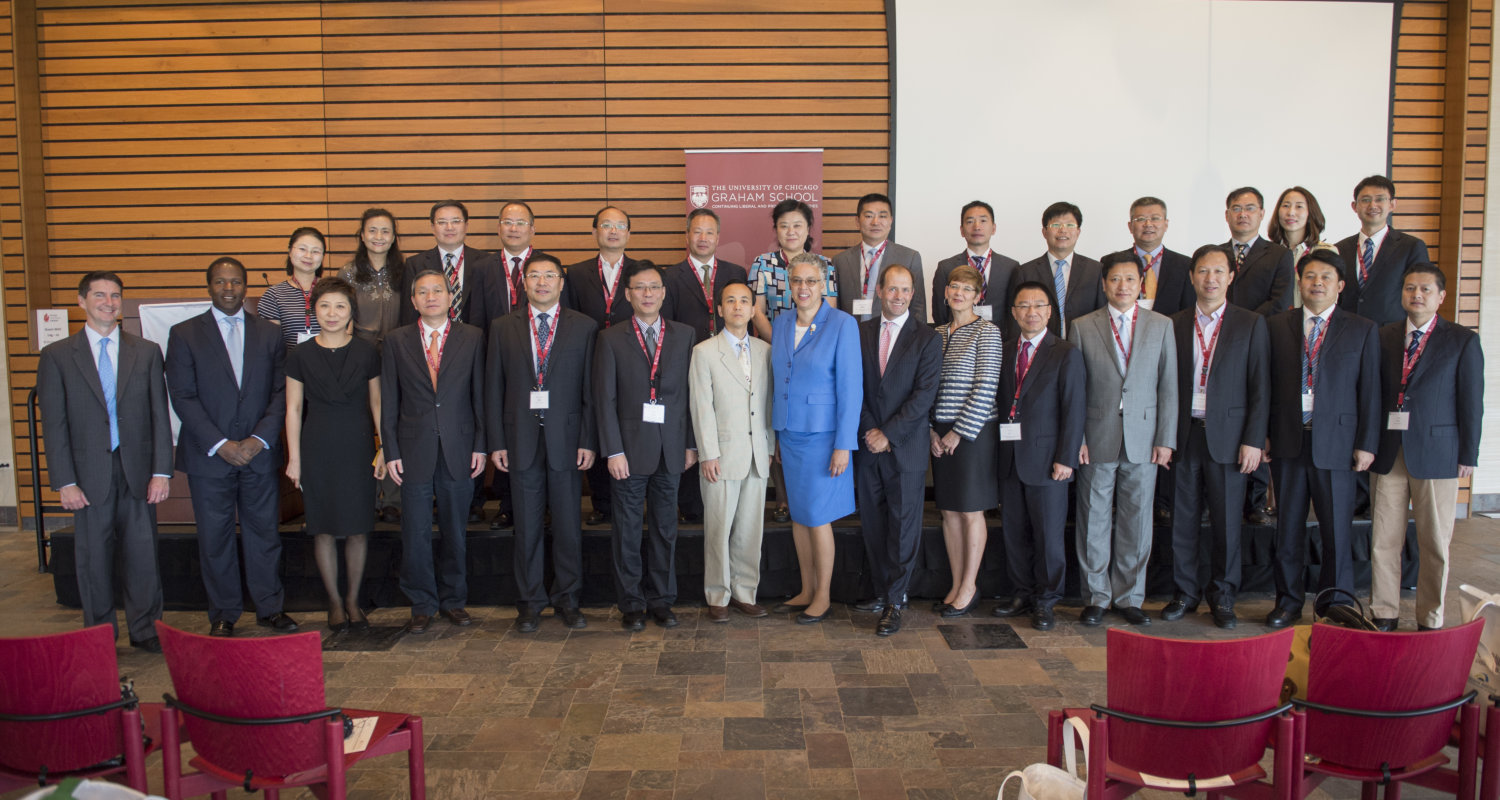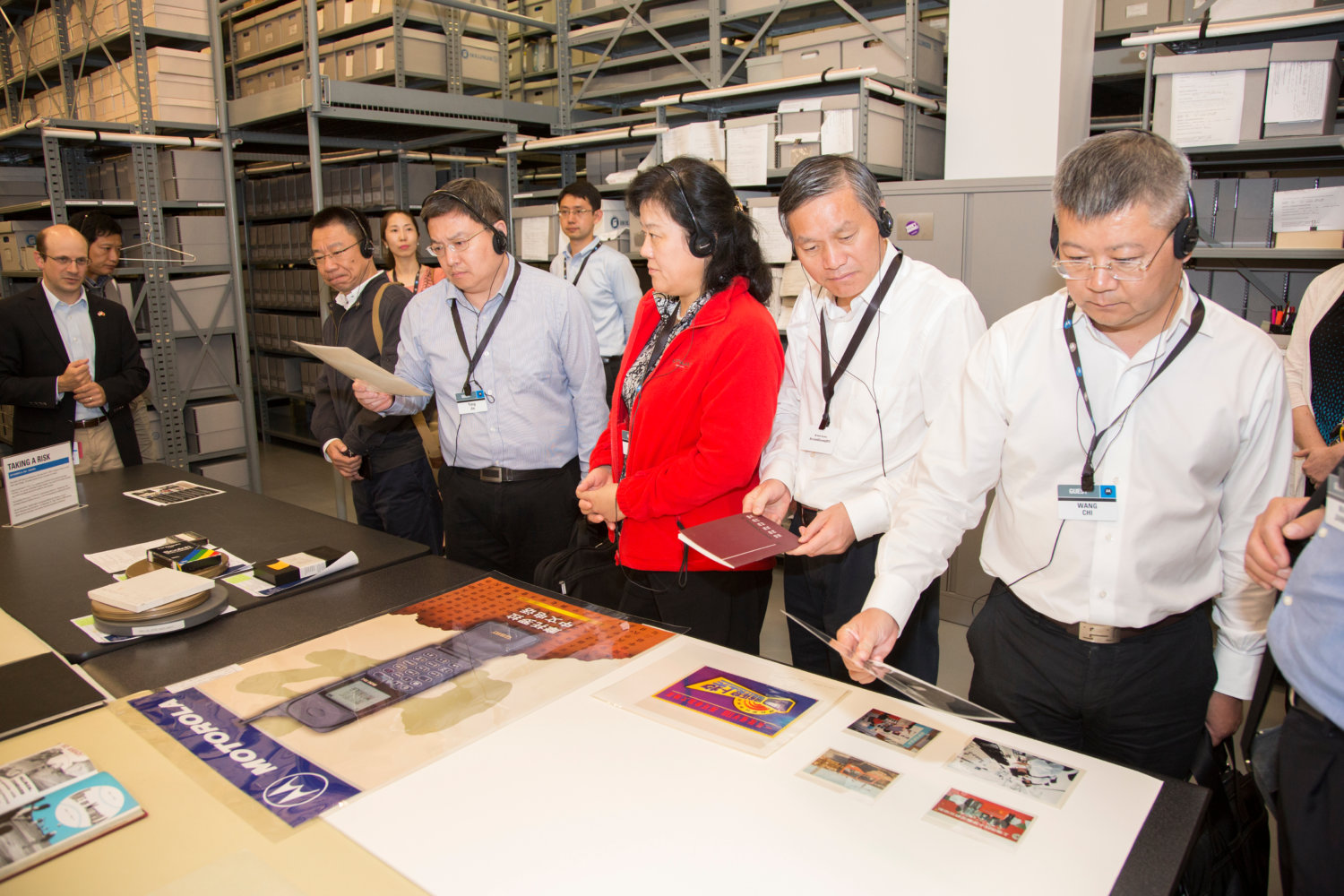By Leigh Wedell, Chief Sustainability Officer, Paulson Institute, & Michael Gurton, International Business Development Officer, Portland Development Commission

Party Secretary Li Yifei of Yiwu county in Zhejiang Province has big plans for his county of 1.2 million people: he wants to transform Yiwu into a “people-centered” place by creating walkable districts modeled on Portland’s Pearl District. The inspiration to transform his county comes after an intensive three-week sustainability study program organized by the Paulson Institute, including a four-day stop in Portland. Party Secretary Li is looking to develop his plan in cooperation with Portland, which has completed similar collaborations with other Chinese cities, including Kunming.
The Paulson Institute delegation included about 20 mayors, party secretaries, and provincial and local sustainability officials from Zhejiang, a coastal province known for its entrepreneurial culture. The training program targets local officials who are tasked with executing the Chinese government’s ambitious plans to transform the economy through the pursuit of quality growth and a greater focus on the environment. For the first time, Chinese officials will have to reach not only economic targets, but also environmental targets. The new emphasis is on building cities for people and not just economic growth.
So the race is on to develop high impact projects that will improve environmental sustainability in their localities. Portland provides many valuable lessons on building cities for people, and, importantly, these lessons can be readily applied to cities of all sizes—even cities on an enormous Chinese scale, which is home to eight cities of more than ten million people.
What can Yiwu take from the Portland model? Apart from sharing a vibrant tourist economy and a mild climate, the places are vastly different. Yiwu has about double the population of Portland and is best known for its 4 million square meter commodities market, which underpins the economy and defines the residents’ way of life. In Portland, sustainability is what it’s all about. Sustainability and environmental stewardship are a state of mind and a foundation of its urban design. And that’s exactly what Party Secretary Li thinks Yiwu needs.
Portland’s regional urban growth boundary was one of the first of its kind, preventing sprawl and supporting compact and efficient urban networks. The city’s unique model for urban planning integrates public policy and planning tools such as land use and public financing with private sector know-how in the development and construction of buildings. A focus on walkability and the prioritization of biking, walking, and transit have inspired human-scale design, preservation, and adaptive use to create housing, retail, offices, and parks in a more sustainable and livable city.

In downtown Portland, nothing is more emblematic of that model than the Pearl District, a former rail yard redeveloped on a district scale that has succeeded beyond expectation. Lauded as one of the 10 best new neighborhoods in the United States, the 245-acre mixed-use neighborhood is strategically located immediately north of the central business district of Portland. As the Chinese officials strolled through the streets and traveled between meetings on foot, they started thinking about how they could foster this type of development in their cities, which have moved away from the traditional hutong (small lane)-style compact neighborhood planning to the megablock, big boulevards we see today.
The Pearl offers a mix of synergistic uses that create 24-hour activity and street level dynamism. Retail, office, education, art, residential and performance spaces are all incorporated, with carefully curated ground floor retail combining local boutiques, selected national chains, food, and necessary services.
This kind of approach can add up to a real impact on greenhouse gas emissions and economic development. The EPA states that urban plans featuring walkability, mixed use, and bike paths can reduce GHG emissions by 9 to 15 percent by 2050. Portland was instrumental in the US for linking the opportunities to reduce environmental impact through urban planning. In 1993, Portland was the first U.S. city to create a local action plan for cutting carbon. Portland’s updated 2015 Climate Action Plan (CAP) puts the city and Multnomah County on a path to achieve a 40% reduction in carbon emissions by 2030 and an 80% reduction by 2050 (compared to 1990 levels). The city has already reduced carbon emissions by 14% since 1990, while the population increased 30% and jobs increased by 20%.

There is an economic upside too. According to Energy Innovation, walkable urban areas across the United States command higher rents—up to 74 percent higher for office space and a premium of anywhere from $4,000 to $34,000 for residences, based on a study of 15 metropolitan areas in the United States. A study of consumer expenditures in British towns found that customers who walk actually spend more than those who drive or take mass transit. There are also the added benefits of increased sense of community and more physical activity for residents in walkable districts.
Myriad tried and tested sustainability measures are being implemented throughout the world, but there is no silver bullet for solving sustainability issues. Local Chinese officials have an urgent need to find measures that can work in the unique circumstances that China presents. There is no more effective way to assess these options than experiencing them firsthand. The Paulson Institute has seen the “seeing is believing” dynamic consistently through its sustainability training program, now in its third year. The head of our first delegation, the Party Secretary of a Beijing district, took a bike ride along the Chicago lakefront and was so moved by the experience that he went back and revamped plans for his riverfront to introduce more green space and bike paths.
Portland similarly inspired the Zhejiang officials on our delegation, and the city has an impressive track record in other cities throughout China. Providing these types of experiences to the officials and mayors on the frontlines of China’s war on pollution has an impact and should continue to be a part of China’s green revolution.




